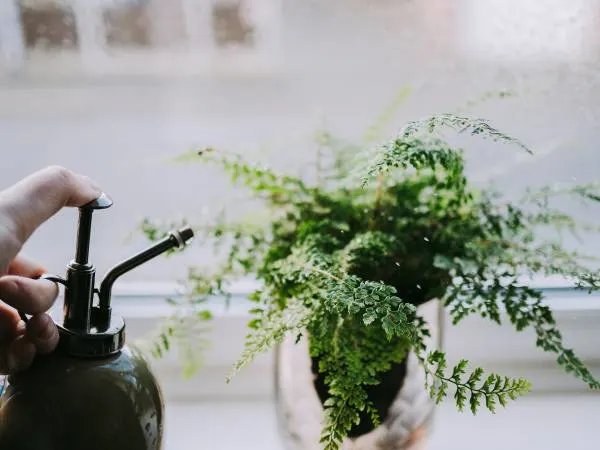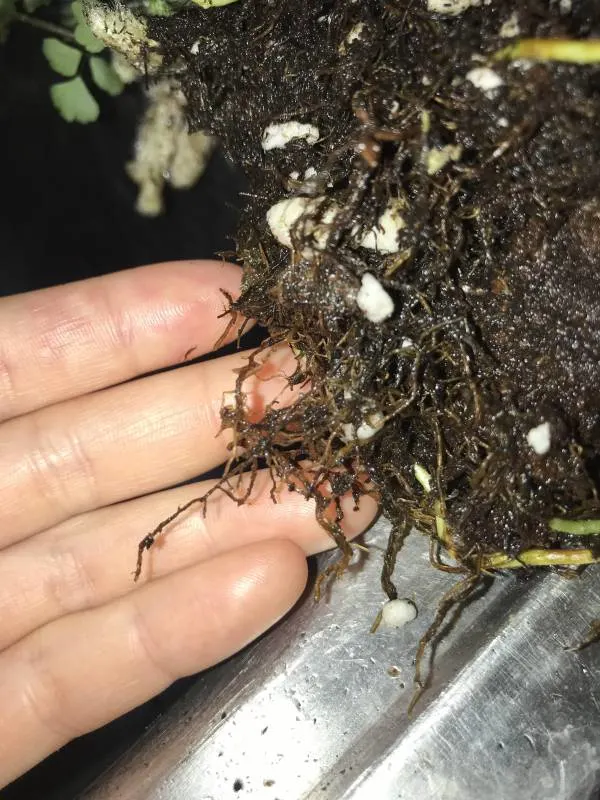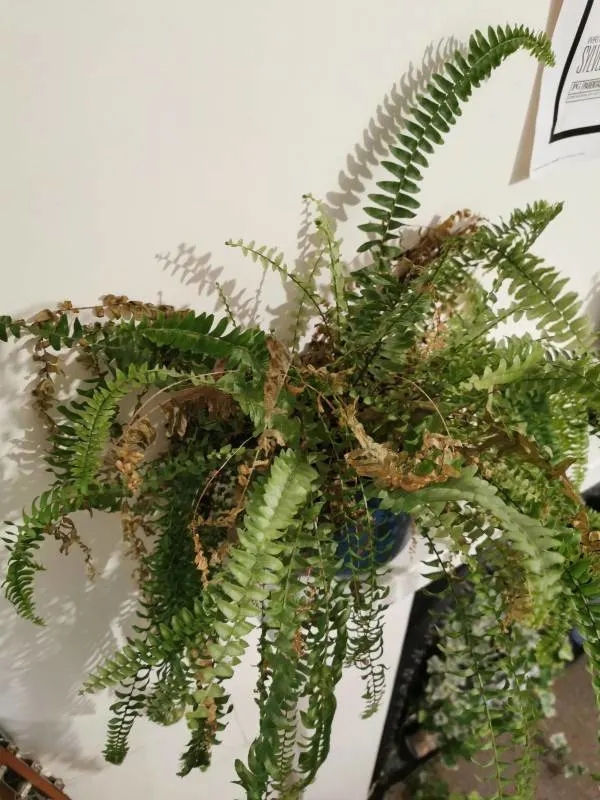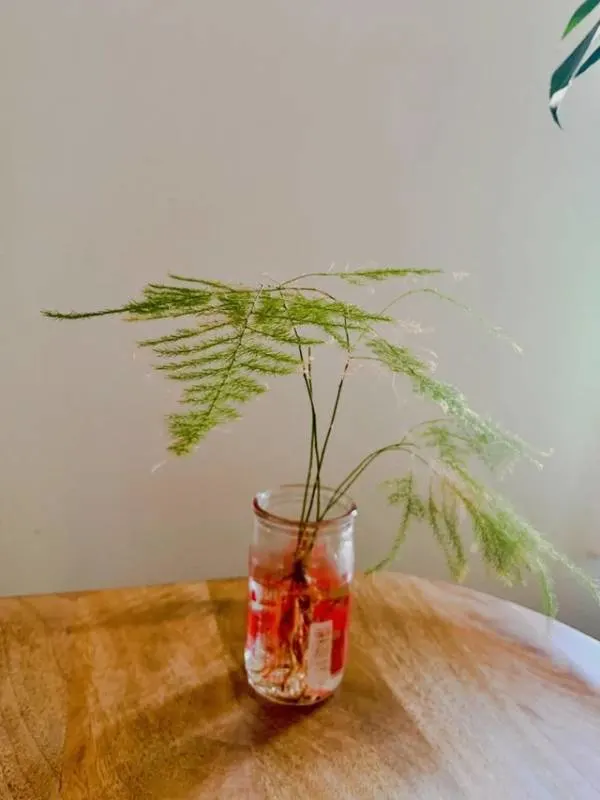Feeling a bit concerned?
Here’s the good news: When it comes to watering ferns, most aren’t too demanding.
It doesn’t mean that you can forget to water ferns. Because, both both overwatering and underwatering can make your fern plant unhappy.
So, the question remains: How often to water ferns?
Today, in this blog post, we will provide you with a mysterious guide that leaks all the secrets to water ferns and to keep your plants hydrated.
So, don’t wander off just yet!
Keep reading, and soon you’ll catch some clever tips to simplify your watering routine.

How Often to Water Ferns?
While caring for ferns may pose some challenges, the process is actually straightforward, especially when it comes to watering.
These tropical plants love water because they originally come from places where it rains a lot.
But don’t get too carried away because excess water can lead to drowning the plant’s roots, ultimately resulting in diseases like root rot.
Generally, the watering schedule for ferns varies depending on whether they are growing outdoors or indoors.
So, let’s discuss the specifics of watering ferns, both when they are grown outdoors and indoors.
Outdoor Ferns
Remember, when ferns are grown outdoors, they require less attention than those grown indoors.
Still, don’t forget to water outdoor ferns, as they require about one to two inches of water per week. During the warm, dry summer, water them more frequently as their growth rate increases and the root systems expand.
During this period, an outdoor fern plant will demand more moisture.
Neglecting to water your fern plant can lead to yellowing or browning of the leaves.
Related Article: Why Is My Fern Turning Brown – 5 Top Reasons!
Pay extra attention on windy days as well.
Even though you might assume windy days mean less humidity, it’s quite the opposite for ferns.
The wind, particularly when combined with the intense, direct sunlight from above, can swiftly take away moisture from leaves before the roots can absorb it, often leading your plant to dry out more frequently.

Indoor Fern Plants
Taking care of your indoor fern is similar to nurturing a small garden within your home.
Fern plants grown indoors have their own unique characteristics and preferences that you must be familiar with.
When ferns grow indoors, they typically need watering every two to three times a week.
But wait, here’s the catch!
If you’ve got a little fern basking near the window, it’s going to be asking for greater sips of water than the one tucked away from the sun.
Apart from that, figuring out the size and type of pot for your plant is also vital.
For example:
If your fern plant is in a plastic or clay pot with blocked drainage holes at the bottom, it might retain moisture, leading to consistently moist soil and potential to get fungal diseases.
In the case of consistently moist soil, it’s better to water your plant less.
A good rule of thumb is to check if the top inch of the soil feels dry before watering.
If it feels dry, give your fern a gentle hint of filtered or distilled water. If it’s still damp, check again the next day.
There are many other factors that must be considered while watering the indoor growing ferns.
Let’s discuss all of these factors in detail.

Other Factors to Consider While Watering Your Indoor Fern Plants
When it comes to watering your indoor fern plants, it’s not just about how often you do it.
Instead, where your plant resides and how you water it also plays a crucial role.
So, must consider these factors before watering your indoor ferns.
Finding the Right Spot
Consider the play of sunlight exposure through a curtain of leaves – that’s the atmosphere ferns relish.
Like most plants, ferns prefer bright, indirect light.
It’s like a dance between shade and sunshine that sustains them.
If you’re lucky enough to have a window where the sun gently filters through, blessing your plants with lovely indirect sunlight, it might be the perfect place for your ferns to flourish.
Moreover, it’s crucial to protect indoor ferns from direct sunlight exposure.
As we are talking about finding the right spot, it becomes crucial to discuss the best soil preferences as well.
Just like other plants, ferns have specific potting soil preferences.
They enjoy moist soil that drains well – a balance between moisture and aeration.
Water at the Roots
When it comes to watering, remember that ferns absorb water through their roots.
So, instead of watering from above and risking water splashing onto the leaves, aim to water the soil dry around the roots.
It helps to prevent issues like,
Sunscald damage which is caused by water droplets that magnify the sun’s heat on the plant leaves.
Likelihood of fungal diseases that thrive when you keep your plant in overly wet conditions.
Just by changing the method of watering, you can protect your plant from many different threats.
Humidity
Speaking of humidity, ferns love it!
While their native habitats offer humidity levels around 70%, the average home usually has humidity levels much lower, around 5–10%.
To keep the soil moist and promote flourishing growth, aim for 30–50% humidity.
Placing a humidifier in the room with your ferns or using a second pot with moist sphagnum moss beneath the plant’s pot can help maintain the proper moisture levels.
If your ferns show signs of brown discoloration at the leaf tips or complete leaf death, it’s a sign they crave more humidity.
Related Article: 5 Best Humidifiers For Plants – (Comprehensive Buying Guide)
Temperature
Like other factors, temperature plays a role too.
When temperature increases above 75°F (24°C), water ferns more frequently due to increased evaporation and to keep them cool.
On the other hand, if temperatures drop below 60°F (15.5°C), hold back on watering until the soil surface feels dry to the touch.
One more thing, remember, not all water is created equal.
So, use room temperature water for hydration and misting, as cold water can lead to spots on the plant leaves.
Signs That You’re Watering Your Ferns Inappropriately
Watering ferns can be tricky, especially if you’ve had prior difficulties.
Knowing the right amount of water to provide to your fern plants and the appropriate timing can often feel like solving a puzzle.
Your ferns will help you to understand that!
Let’s explore some cues that most ferns demonstrate when they are not receiving the proper amount of water.
Overwatered Fern’s leaves
Excess moisture ruins the plant.
If you see your fern sporting sad, yellow, and wilted leaves or showing black and squishy roots, you need to think about how often you water your plant.
Related Article: Why Is My Fern Turning Yellow – Everything You Need To Know
These signs mean that you have overwatered your fern.
So, what can you do in this regard?
Give it a pause
Snip off the sad parts, and
Check the roots.
Consistent moisture can lead to root rot.
To check if your plant has root rot, you’ll need to look at the plant root zone. If the roots of your plant have turned dark (black and mushy), it might be time to say goodbye to your fern and start anew.
Make sure to provide other ferns with enough moisture and water only when needed.
Remember, water your fern: It loves to stay hydrated but doesn’t want to drown in water.

Signs of an Underwatered Fern
Caring for your ferns requires a watchful eye and a sprinkle of know-how.
Just like us, these leafy friends can get a bit thirsty, but don’t go overboard! You need to know exactly how much water your ferns need.
If you spot,
Wilting
Drooping fronds
Leaves turning brown
It means your fern might feel thirsty.
But hold on, not all browning means that your fern is gasping for water – sometimes, it’s just a sign of natural aging or a plea for more humidity. Tidy up by trimming those browned leaves, and take proper care to bring your fern back to its green, lively self.
Related Article: Why Are My Boston Ferns Turning Brown? (3 Crushing Reasons!)
Check your plant’s soil – if it’s as dry as a desert and moving away from the pot’s edges, your fern is thirsty and needs a drink.
If you think your fern’s water tank is running low, give it more water during each watering session.

When to Water Fern Plants?
When it comes to keeping a healthy watering frequency, it’s all about understanding the needs of your fern plant.
To know if your fern needs a drink, examine the soil.
Stick your finger in there – if it feels dry to the touch, it’s time to hydrate.
Dry soil can harm the roots of your fern plant, so don’t let it get too dehydrated.
Watch out for drooping plant leaves; they’re like your fern’s way of saying, “I’m thirsty.”
Brown or yellow leaves are another clue that it’s time to water your ferns.
But be cautious – if the leaves of your fern curl in strange ways, it might be best to hold off on the water until they straighten out.
And don’t forget the pot itself – if it feels light as a feather, your fern needs a drink.
But if it’s heavy, give your plant a break from watering.
Keeping your ferns well-hydrated is the key to their lush, green success.
How to Rehydrate a Dried-Out Fern
Reviving a thirsty fern is as simple as giving it a refreshing drink!
Here’s the easy step:
First, grab a big tub to hold your fern pot.
Fill it with lukewarm water.
Now, carefully dip the pot into the water to the rim, ensuring the leaves of your fern plant remain dry.
Keep your fern submerged for about 2 minutes or until the bubbles stop bubbling up.
If you have an outer pot, take it off.
After a refreshing soak, let the pot drain in a clean sink or tub for 10–15 minutes.
If it’s still dripping after that, give it another 10–15 minutes until it’s all dried up.
Now, return your fern to its usual spot, and resume your regular care routine.
Watch it bounce back to life within just a few hours!

How Long Can a Fern Go Without Water?
Ever had fern plants and wondered how patient ferns can be when it comes to water?
Well, they’ve got quite the endurance!
The duration actually varies based on the fern type and its moisture level.
To keep these green pals happy, remember two golden rules.
First, don’t let their roots go bone-dry; keep the soil slightly damp to the touch.
Second, pay attention to their leaves – too much dryness can lead to drooping and fading away.
If you notice some of your fern leaves waving the yellow or brown flag of distress due to dehydration, try this trick: gently misting with moderate water every other day instead of drowning your plant regularly.
Related Article: How To Save A Dying Staghorn Fern By Following 15 Easy Care Tips
That’s all for today!
Now it’s time to move toward the conclusion.
Conclusion!
Ferns are like the low-maintenance friends of the plant world when it comes to water.
Just 2–3 drinks a week will keep them content.
But their watering needs depend on whether they are growing indoors or outdoors.
Apart from that, if you are growing ferns indoors, you have to consider some other factors as well, like:
Location
Temperature
Humidity
Pot size
In order to water your ferns properly, it is essential to do regular checking and water fern only when the top inch of the soil feels dry.
Otherwise, drooping, yellowing, or browning of leaves are signs that you are watering your ferns incorrectly.
Ready to transform your indoor or outdoor space with lush green ferns?
Start today by applying these watering techniques and watch your garden thrive!
Best Regards,
Moiz Atiq.
